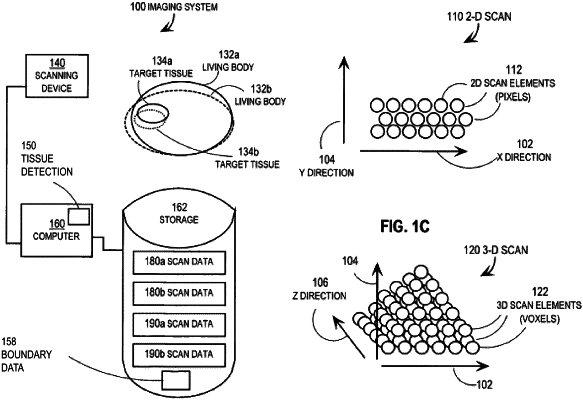| CPC A61B 6/032 (2013.01) [G06N 3/08 (2013.01); G06T 7/0012 (2013.01); G06T 2207/10081 (2013.01); G06T 2207/20081 (2013.01); G06T 2207/20084 (2013.01); G06T 2207/30056 (2013.01); G06T 2207/30096 (2013.01); G06T 2207/30101 (2013.01)] | 22 Claims |

|
1. A method for measuring post contrast phase, comprising:
collecting three dimensional (3D) medical imagery of a subject using a 3D medical imaging device after injecting the subject with a contrast agent;
selecting a first set of one or more slices displaced in the axial direction, wherein each slice in the set includes a first anatomical feature selected from a group consisting of an aorta, a portal vein, an inferior vena cava, a liver, a spleen and a renal cortex;
selecting a second set of one or more slices displaced in the axial direction, wherein each slice in the second set includes a different second anatomical feature selected from the group;
selecting a first image region on a first slice of the first set and a different second image region on a second slice of the second set, wherein the first image region includes the first anatomical feature and the second image region includes the different second anatomical feature;
using a first trained convolutional neural network on a processor with input based on the first image region and the second image region, determining automatically on the processor a post contrast phase, wherein the first trained neural network comprises:
a first plurality of convolutional hidden layers operating on the first image region;
a second plurality of convolutional hidden layers operating on the second image region; and
at least one fully connected hidden layer receiving output from both the first plurality of convolutional hidden layers and the second plurality of convolutional hidden layers, and outputting to an output layer of one or more nodes corresponding values that each represent a probability of a post contrast phase; and
presenting automatically, on a display device, output data based on the post contrast phase.
|